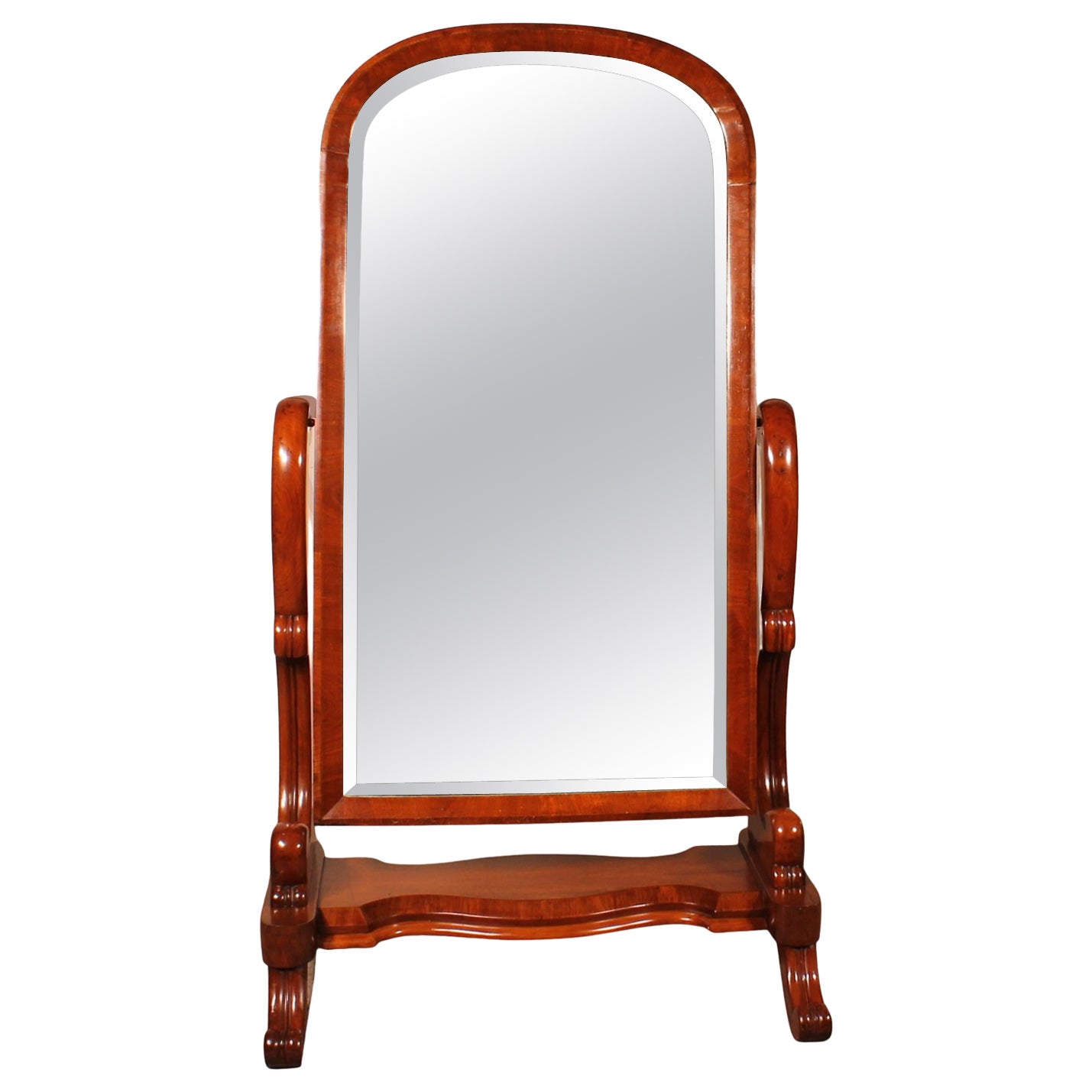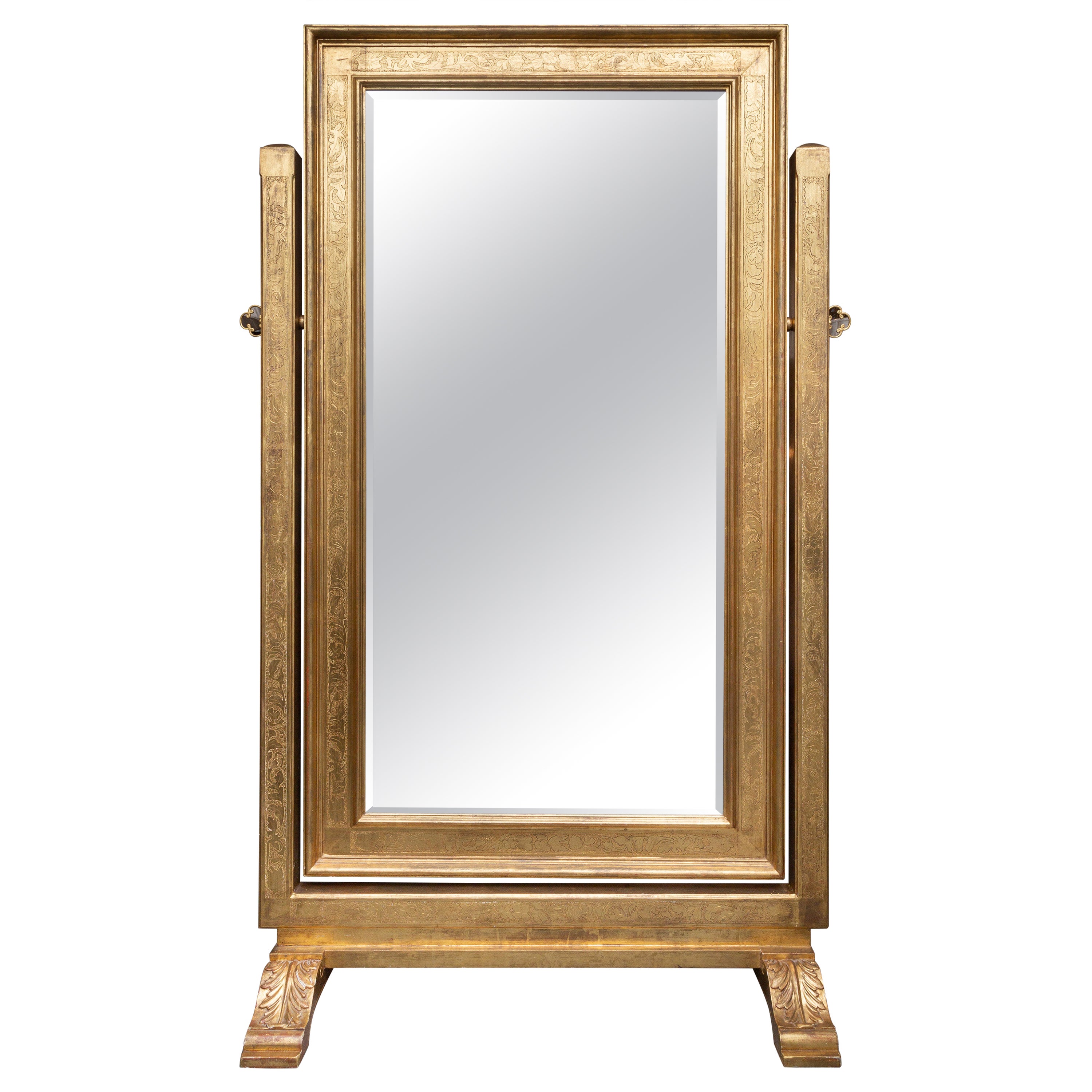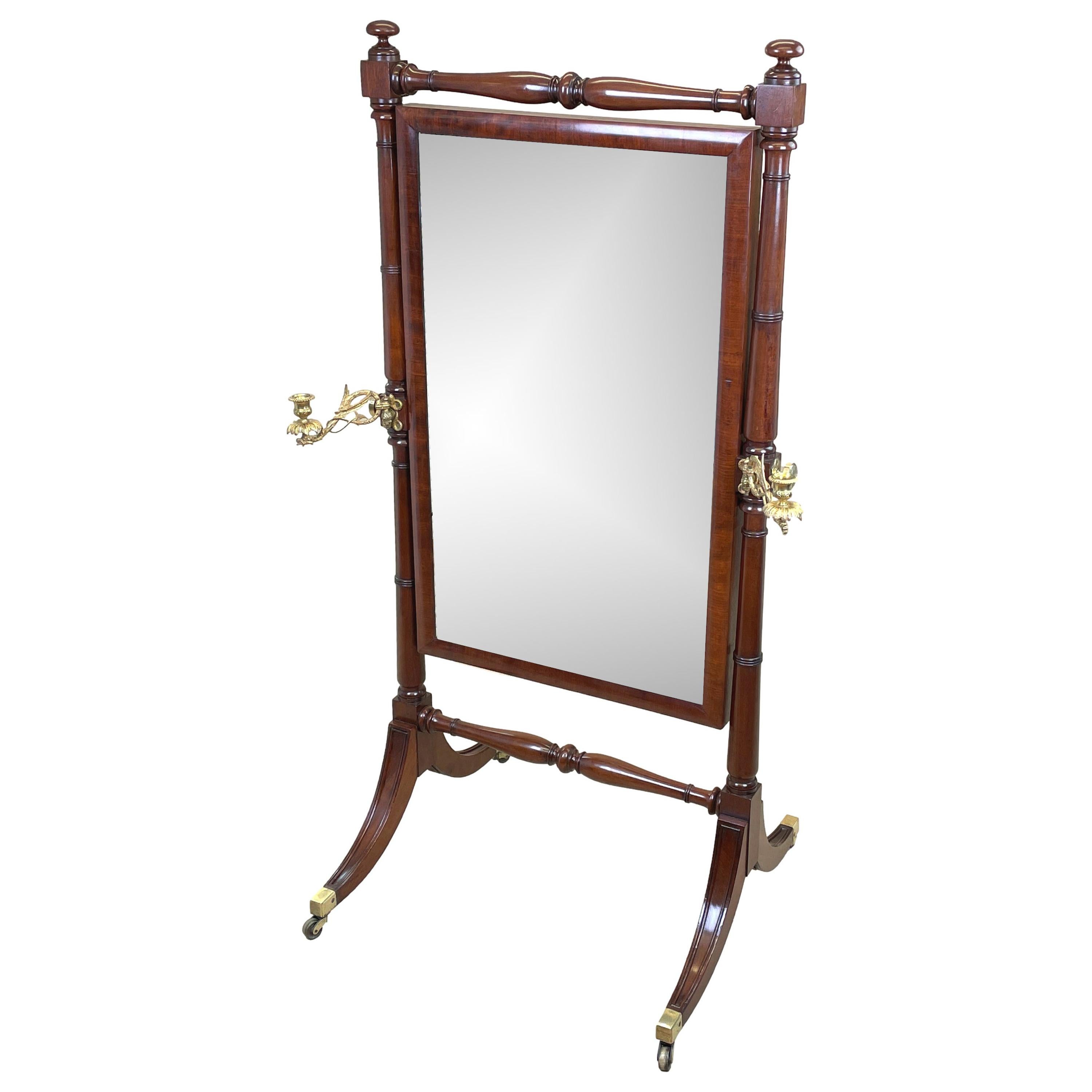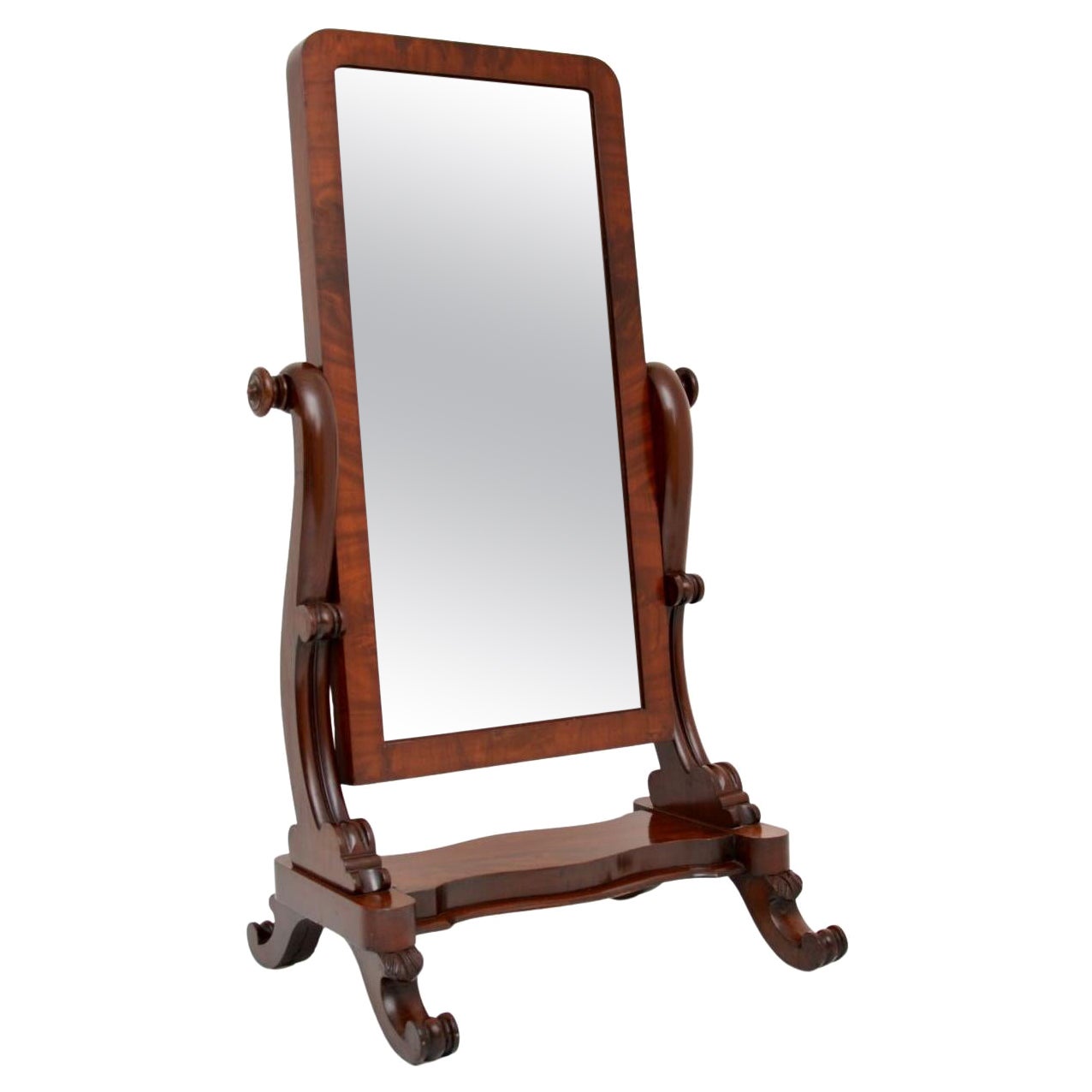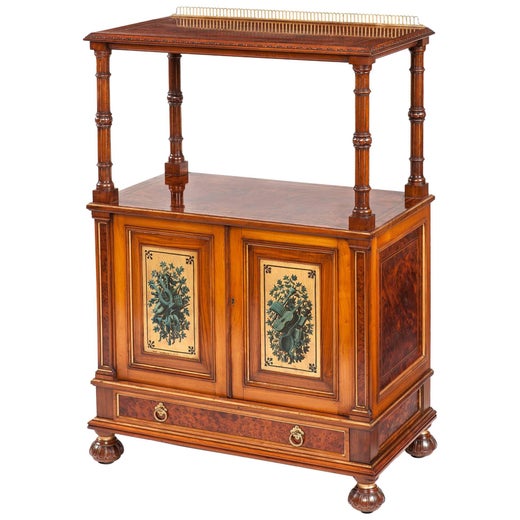Antique Victorian Ash & Burr Walnut Gillows of Lancaster Cheval Mirror Sconces
About the Item
- Creator:Gillows of Lancaster & London (Maker)
- Dimensions:Height: 75.4 in (191.5 cm)Width: 37.41 in (95 cm)Depth: 21.66 in (55 cm)
- Style:Victorian (Of the Period)
- Materials and Techniques:
- Place of Origin:
- Period:
- Date of Manufacture:19th Century
- Condition:Wear consistent with age and use. Minor fading.
- Seller Location:GB
- Reference Number:1stDibs: LU2823328969262
Gillows of Lancaster & London
It would be difficult to find an antique furniture enthusiast or collector unfamiliar with the name Gillows of Lancaster and London. The British furniture company — which has earned references in the writings of Jane Austen and elsewhere in literature — is renowned for its exceptional quality craftsmanship, and attracted designers such as Thomas Chippendale, Thomas Sheraton and George Hepplewhite in its heyday.
The firm was founded circa 1730 by Robert Gillow (1704–72), who worked as a joiner, housebuilder and overseas merchant before making furniture for homes and export. Gillow established his business in his home city of Lancaster. However, the company later expanded into London in the 1750s after Robert entered into a partnership with his son, Richard, who apprenticed with a London architect and learned the merchant trade in Barbados. Richard had entrepreneurial aptitude — he managed apprenticeships at the firm, ensured that quality materials were a priority, navigated economic hardships, and designed furniture, too. He created seating based on sketches drawn by his cousin, James Gillow, in London.
London’s wealthy upper class took notice of the Gillows’ high-quality furniture, which came to include bedroom furniture, cabinets, a range of seating and other pieces made of rosewood or rich mahogany imported from the West Indies and Jamaica. By the end of the 18th century, the manufacturer was one of the leading furniture makers in Britain. Gillows designed its own furnishings and worked with significant designers; they had in-house upholsterers and cabinetmakers and employed decorative techniques such as “japanning” in their designs.
Gillows of Lancaster and London became Gillow & Co. in 1813 after selling to Redmayne, Whiteside and Ferguson. The company continued to thrive throughout the Georgian era and into the Victorian period, a time that yielded well-known collaborations with Scottish architect and designer Bruce Talbert on a regular basis. High-brow clients of the manufacturer clamored for their inventive and functional designs for tables and writing desks, many of which incorporated whimsical elements such as secret and pop-up drawers. There was also demand for earlier Gillow designs such as Baroque and Gothic Revival pieces as well as adaptations of Chippendale works.
Despite their success, Gillow & Co. entered into financial hardship during the late 1800s with the advent of mass-produced furniture. By 1903, they merged with Waring of Liverpool to become Waring and Gillows and, in 1980, were taken over by Maple & Co. to become Maple, Waring and Gillow. Today, many Gillows of Lancaster and London pieces are in museums throughout the United Kingdom, New Zealand and Australia.
Find antique Gillows of Lancaster and London furniture on 1stDibs.
- ShippingRetrieving quote...Ships From: United Kingdom
- Return PolicyA return for this item may be initiated within 14 days of delivery.
- Large Antique Victorian 1880 Oak Floor Standing Mirror Original GlassLocated in GBWe are delighted to offer stunning original plate glass Victorian mirror with hand carved barley twist oak frame from a grand Lake District estate This mirror really is impressive...Category
Antique 1880s English High Victorian Floor Mirrors and Full-Length Mirrors
MaterialsGlass, Oak
- French Empire Hardwood and Gilt Metal with Candles Cheval Mirror, circa 1810Located in GBWe are delighted to offer for sale this original circa 1810 French Empire Cheval mirror with gold gilt bronze candlestick holders and fitti...Category
Antique 1810s French French Provincial Floor Mirrors and Full-Length Mir...
MaterialsMirror, Hardwood
- Gillows of Lancaster Aesthetic Movement Amboyna Burr Walnut Occasional TableBy Gillows of Lancaster & LondonLocated in GBRoyal House Antiques Royal House Antiques is delighted to offer for sale this very rare, fully restored, super quality Gillows of Lancaster & London Amboyna wood & burr walnut eboni...Category
Antique 1880s English Aesthetic Movement Tables
MaterialsWalnut
- Rare Pair of Gillows Lancaster English Oak Antique Victorian Bookcase CupboardsBy Gillows of Lancaster & LondonLocated in GBWe are delighted to offer for sale this stunning near pair of original Victorian heavily hand carved oak library bookcase cabinets made by the world famous firm of Gillows of Lancaster & London If you are in the market for the finest pair of English library bookcases...Category
Antique 19th Century English Victorian Cupboards
MaterialsOak
- ANTIQUE VICTORIAN GILLOWS LANCASTER AESTHETiC MOVEMENT AMBOYNA WOOD BOOK TABLEBy Gillows of Lancaster & LondonLocated in GBRoyal House Antiques Royal House Antiques is delighted to offer for sale this absolutely stunning, very unique, Amboyna and Ebony Aesthetic Movement Victorian revolving book table attributed to Gillows of Lancaster & London Please note the delivery fee listed is just a guide, it covers within the M25 only for the UK and local Europe only for international, if you would like an accurate quote please send me your postcode and I’ll provide you with the exact price A very good looking, highly collectable and well made table. These were designed as book tables for your favourite author to be displayed, the main shelf rotates, its rare to find it in Amboyna and Ebony, it is most certainly made by Gillows as they are famous for this type of furniture, I usually have one or two pieces of this type listed that are stamped Gillows, the odd desk...Category
Antique 1880s English Victorian Bookcases
MaterialsEbony, Amboyna
- Stamped Gillows of Lancaster Walnut Height Adjustable Fire Screen, circa 1850By Gillows of Lancaster & London, Waring & Gillow, Gillows of Lancaster & LondonLocated in GBWe are delighted to offer for sale this very rare original Gillows Lancaster circa 1850 height adjustable walnut fire screen A very good looking and well made screen from pretty m...Category
Antique 1850s English Victorian Screens and Room Dividers
MaterialsWalnut
- Empire Cheval MirrorLocated in Woodbury, CTIn walnut with ebonized trim, this stately mirror has exquisite lines and exemplifies the design motifs of the period. Burl walnut surrounds the glass that has survived more or less ...Category
Antique 19th Century French Empire Floor Mirrors and Full-Length Mirrors
MaterialsWalnut
- Antique French Empire Style Cheval Floor Mirror Cherry & BrassLocated in Rockaway, NJAntique French Empire Style Cheval Floor Mirror Cherry & BrassCategory
20th Century French Biedermeier Floor Mirrors and Full-Length Mirrors
MaterialsBrass
- Cheval Mirror in Mahogany, 19th CenturyLocated in Brussels, BrusselsElegant cheval mirror in solid mahogany and mahogany veneer from the 19th century from England Very beautiful mirror which has its original glass which is beveled Very beautiful pa...Category
Antique 19th Century British Victorian Floor Mirrors and Full-Length Mir...
MaterialsMahogany
- Napoleon III Gilt Cheval MirrorLocated in WEST PALM BEACH, FLImpressive continental cheval mirror with a mild carved design and a gilt surface.Category
Antique Late 19th Century Empire Floor Mirrors and Full-Length Mirrors
MaterialsMirror, Wood
- Georgian Mahogany Cheval Dressing MirrorLocated in Bedfordshire, GBA very fine quality George III period mahogany cheval Dressing mirror having extremely elegant turned supports Enclosing swing frame with replaced mirror plate flanked By ormolu c...Category
Antique Late 18th Century English Georgian Floor Mirrors and Full-Length...
MaterialsMahogany
- Italian Empire Walnut Brass & Giltwood Cheval Mirror Early 19th CenturyLocated in Atlanta, GAimportant and rare and completely intact, retaining antique beveled mirrorplate, the pivoting mirror held in place within the columned frame by brass arrow parts, the frame surmounted by a neoclassical pediment adorned with brass decoration, below the mirror is a shaped tray and lower still a hexagonal stretcher supporting the carved giltwood rams heads and hoof feet which are painted a dark green, this mirror is a lovely example of Lucchese neoclassical furniture.Category
Antique Early 19th Century Italian Empire Floor Mirrors and Full-Length ...
MaterialsBrass

